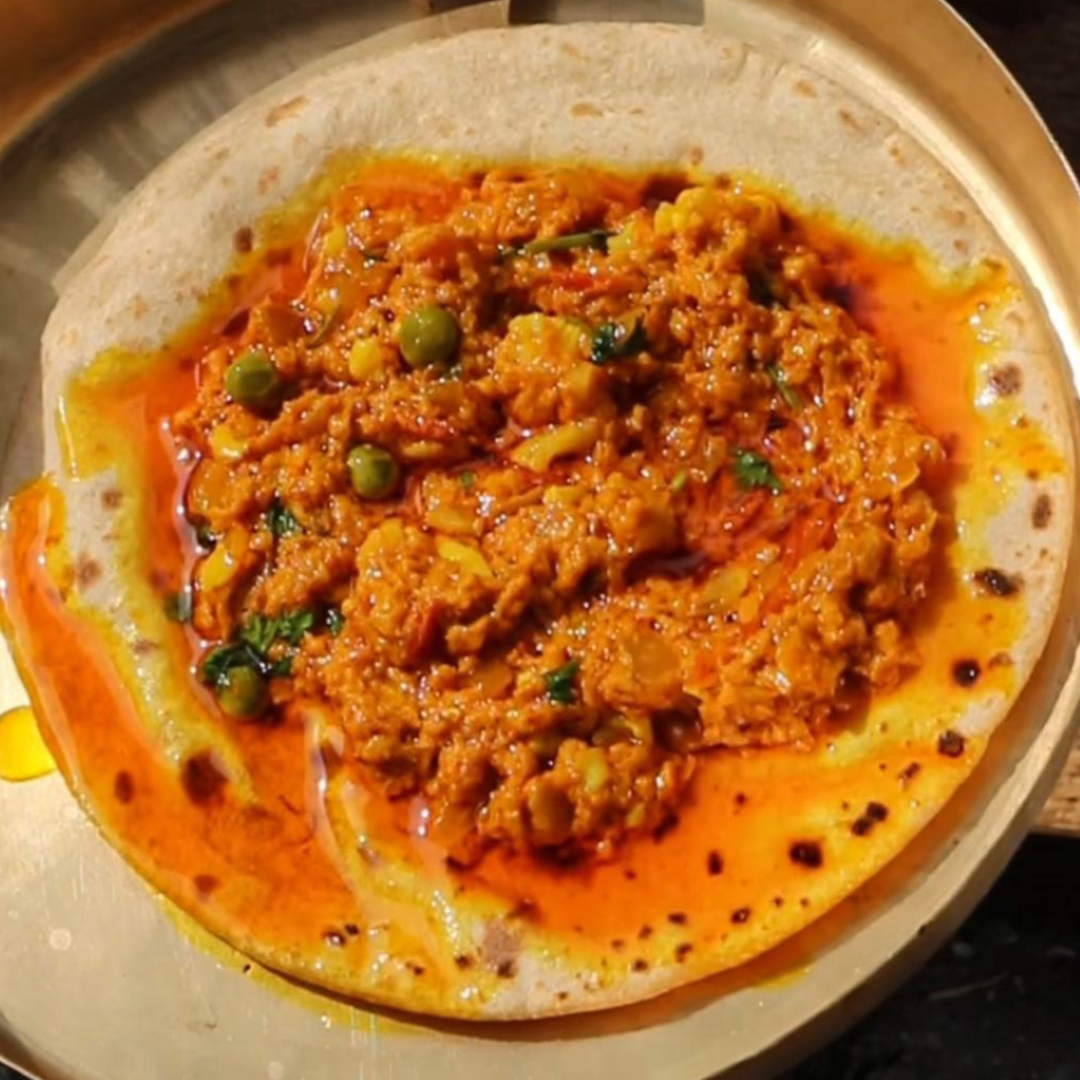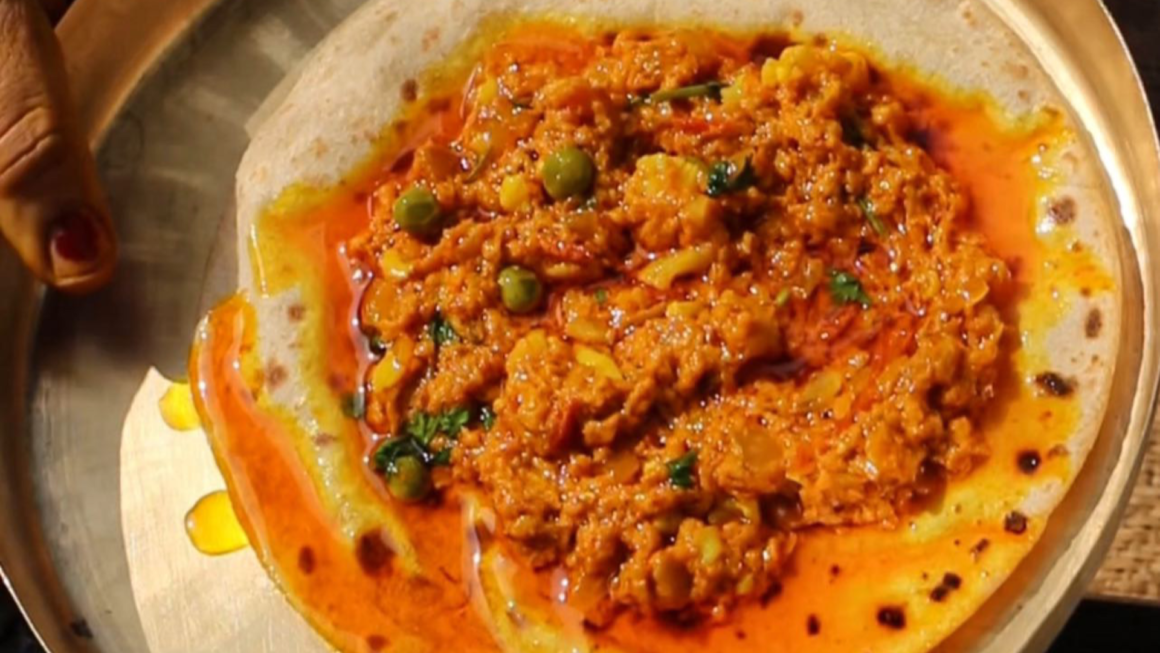Every dish from Marwar, a region renowned for its culinary heritage, is truly unique. One such exceptional recipe is Kachi Haldi ki Sabzi. In Marwari culture, this dish has graced plates for centuries, becoming an integral part of the cuisine. Its sweet aroma has now captured the attention of people across the country.

Rajasthanis have a particular fondness for this winter delicacy. It wouldn’t be an exaggeration to call it the superfood of Marwar. The season for raw turmeric lasts from November to January, with fresh turmeric arriving in markets typically in December. Winter is the perfect time to enjoy this dish for its rich taste and its numerous health benefits.
Kachi Haldi ki Sabzi
Ingredients
- Raw turmeric bulbs: 500 gms
- Green peas: ¼ cup
- Cauliflower: ¼ cup, chopped
- Onions: ½ cup, chopped
- Tomatoes: ½ cup, chopped
- Curd: ½ kg
- Garlic: 15-20 cloves, crushed
- Red chilli powder: 2 tbsp
- Salt: as per taste
Method:
- Peel the raw turmeric and either grate it or crush it using a mortar and pestle.
- Heat ghee in a pan over medium flame. Once melted, add the grated turmeric and sauté until golden, stirring continuously to prevent sticking. Remove the turmeric and set it aside on a plate.
- In the same pan, add the crushed garlic and sauté until aromatic.
- Add the onions, cauliflower, and green peas. Cook for a minute before adding salt and red chilli powder. Stir well to combine.
- Return the cooked turmeric to the pan and mix it thoroughly with the vegetables.
- Gradually add the curd, stirring continuously to prevent curdling. Cook for about 10 minutes, stirring occasionally.
- Serve hot with roti, paratha, or naan.
Watch this recipe here – Kachi Haldi ki Sabzi

Mamta Choudhary, a proud Marwari, is deeply passionate about showcasing the rich culinary heritage of Rajasthan. While dal baati is often seen as the quintessential Rajasthani dish, she is on a mission to highlight the vast diversity of flavours, textures, and traditions that define Rajasthani cuisine.
With a keen eye for food photography, Mamta captures the essence and intricacies of each dish. Her work aims to evoke emotion, offering her audience a sense of warmth from a home-cooked meal or the excitement of discovering something new.
Translations and detailed descriptions are provided to give a better understanding of the story to people from different cultural backgrounds across the globe.

